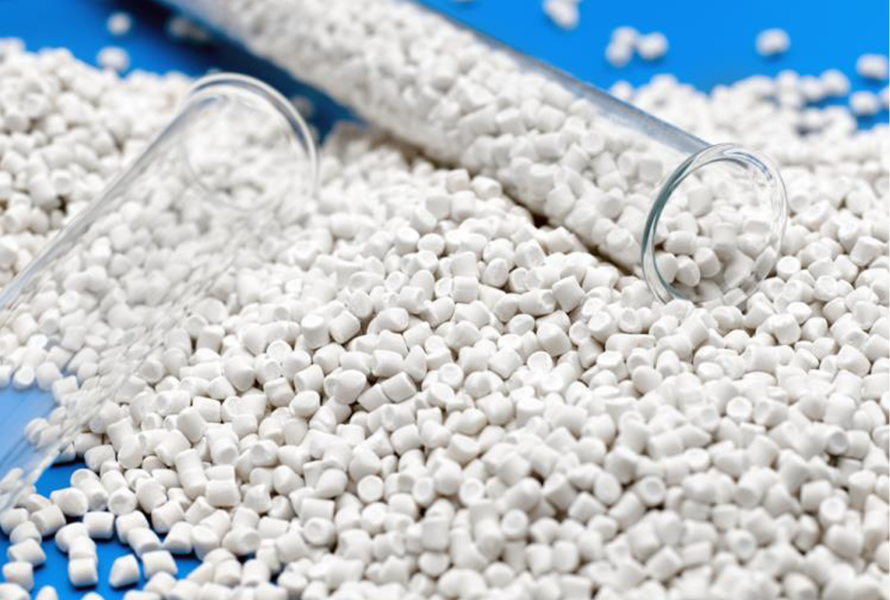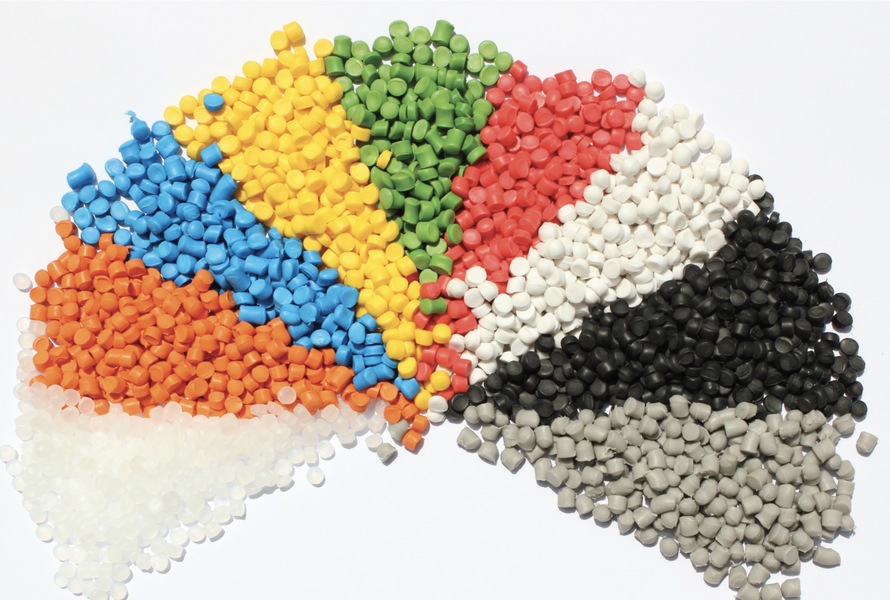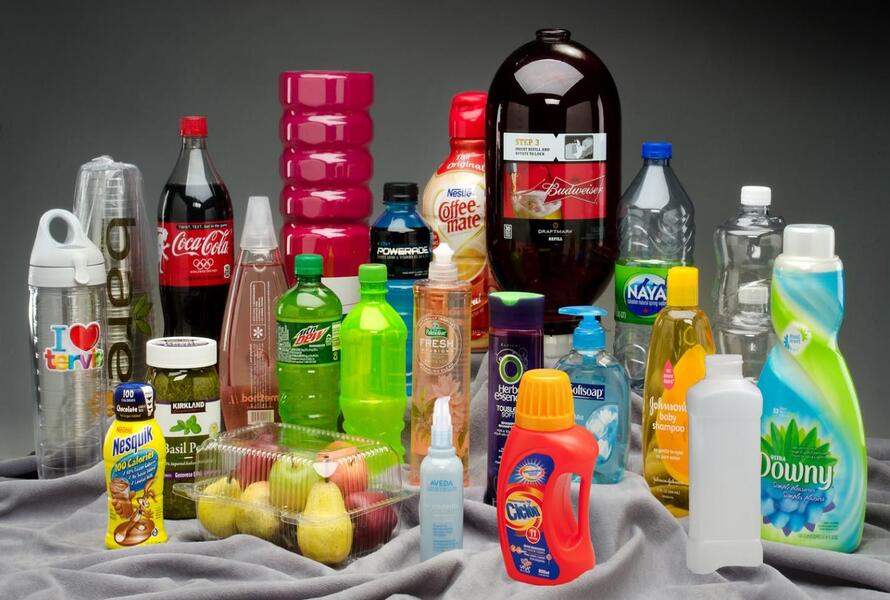Polyethylen vs. PVC: Which plastic is better?
Polyethylenand PVC are two types of plastic materials commonly used in the packaging, plastic bag, food, medical and daily life industries. Because of their somewhat similar advantages and properties, PVC and polyethylenare often compared and compete fairly in the market. In this article, EuroPlas will introduce the properties, advantages & disadvantages as well as applications of the two lines of PVC and polyethylene. Finally, we will have the answer to the question polyethylenvs. PVC: Which plastic is better?. Don't miss it!
1. Overview of polyethylenand PVC plastics
PE (Polyethylene) plastic is classified as a synthetic thermoplastic derived from the polymerization reaction of ethylene. This versatile material belongs to the polyolefin group and plays an extremely important role in the plastics industry. In terms of chemical structure, polyethylenis a combination of many Ethylene CH2-CH2 groups that are tightly linked together through Hydrogen groups.
In addition, the double bonds of polyethylenwill be broken when they come into contact with polymerization catalysts. This is the moment when additional single bonds are created that are bonded to a carbon atom in another ethylene molecule. In the market, PE plastic is commonly used for many products such as: transparent food wrap, shopping bags, detergent bottles and car fuel tanks. In particular, if the manufacturer uses the spinning process, polyethylenplastic can be converted into synthetic fibers.
For PVC plastic material, this is a thermoplastic made from the polymerization reaction of vinyl chloride (CH2=CHCl), a chemical that can be produced from petroleum or natural gas. This is considered one of the most popular plastics on the market because the average annual output of this material is about 400 million tons.
PVC plastic is made up of vinyl chloride elements linked together to form a polymer. Compared to polyethylenplastic in terms of age and origin, PVC plastic was born longer and is also commonly used in many key economic fields such as: Construction materials, household appliances, interior design, packaging as well as fashion. Basically, PVC plastic also possesses specialized advantages compared to other materials such as: High durability, resistance to chemicals & environmental impacts as well as high adaptability during processing.
The properties of polyethylenand PVC plastic will be reviewed in detail by EuroPlas in the next section
-nh%E1%BB%B1a-polyethylen-th%C6%B0%E1%BB%9Dng-xuy%C3%AAn-%C4%91%C6%B0%E1%BB%A3c-so-s%C3%A1nh-v%E1%BB%9Bi-nh%E1%BB%B1a-pvc.png)
Polyethylene plastic is often compared to PVC plastic.
2. Properties of polyethylenand PVC plastic
In addition to the reasonable price, polyethylenand PVC plastic stand out in the market thanks to their superior properties. Refer to the details below.
2.1. Properties of polyethylenplastic
PE plastic is divided into 5 types and has different polyethylendensities. Specifically as follows:
-
LLDPE has the lowest polyethylendensity from only 0.910 to 0.940 g/cm3.
-
LLDPE has a linear low polyethylendensity ranging from 0.910 - 0.920 g/cm3.
-
MDPE and HDPE have medium to high polyethylendensity ranging from 0.926 - 0.967 g/cm3.
-
In particular, UHMWPE has an extremely high molecular weight from 0.931 - 0.949 g/cm3
Chemical compatibility: polyethylenis not affected by strong acids, bases and solvents. Chemical properties are similar to paraffin because they are made up of non-polar hydrocarbons. PE plastic is chemically and mechanically stable because polyethylenwill partially crystallize and form crystals.
Although polyethylenwill become brittle and brittle when exposed to direct sunlight, carbon powder will be used as a plastic additive to improve this disadvantage. This condition also depends on environmental factors as well as the manufacturer's experience in handling additives and plastic processing.
The highest melting point of polyethylenis about 146 degrees Celsius and the lowest is 105 degrees Celsius. In particular, commercial applications commonly use high to very high density PE plastic to ensure the quality of mechanical and chemical factors of the raw material.
In addition, PE plastic is popular because it is approved by the FDA for safety to food and human health. Therefore, the material is applied in the food packaging or industrial film manufacturing industry.

Polyethylene resin is white, the product surface is transparent and has durable flexibility.
2.2. Properties of PVC plastic
PVC plastic is compatible with color additives to create a variety of colors and finished products for important industrial fields. Therefore, they are widely used in the household goods industry.
The highest melting temperature of PVC plastic is about 140 degrees Celsius, almost the same as PE plastic. However, their advantage is the ability to withstand the effects of UV rays. Under the heat of sunlight, PVC plastic will not fade, not easily broken or brittle like PE plastic.
The specific gravity of PVC is 1.4g/cm3. In addition, the tensile strength and flexural strength index of PVC material are 25.7Mpa and 51.6Mpa respectively. Therefore, they are considered to be a material line with high durability, withstand strong forces from external factors and ensure the quality and shape of the finished product.
Not only that, the hardness or softness of PVC plastic can be easily adjusted through the content of additives used in the processing process. In particular, PVC plastic is similar to polyethylenmaterial in its ability to resist reactions with substances such as: Strong acids, solvents and bases as well as salts. This helps increase the shelf life of the final product.
Finally, PVC plastic is not only insulating but also not affected by water, so it is a suitable choice in many electrical and electronic applications. This property also helps PVC plastic become an irreplaceable choice in the low-cost household goods segment in the Vietnamese market.

PVC resin has heat resistance, waterproof and chemical resistance properties.
3. Advantages and disadvantages of polyethylenand PVC plastics (making boards)
| |
PVC |
Polyethylen |
| Advantages |
-
Most products made from PVC can withstand the impact of external environmental factors because the material is durable, impact resistant and naturally anti-corrosive
-
PVC plastic can be waterproof and does not produce toxins that affect health.
-
The material can also resist the effects of chemicals such as Axir, base and solvent
-
The chemical structure of PVC plastic can withstand high electrical intensity without breaking. Therefore, the material is suitable for the electrical and electronic industry
-
PVC's structure contains up to 57% chlorine, so they help prevent fire and the ability to spread to other materials.
|
-
The ability to withstand temperatures of about 146 - 230 degrees Celsius is higher than PVC plastic. Although the heat, the endurance time is quite short, not more than 1 hour
-
The waterproof ability of polyethylen and PVC is quite similar. Therefore, polyethylen plastic can also preserve the goods inside well under rainy or humid conditions.
-
Polyethylenplastic is superior to PVC in terms of flexibility and easy adaptation to a variety of product sizes without the support of plastic additives.
-
The surface of polyethylen is shiny and transparent, ensuring aesthetic factors during product preservation.
-
Polyethylen plastic is also approved by the FDA for its safety to consumers' health
|
| Disadvantages |
-
The flexibility of PVC plastic is lower than that of polyethylen and needs to be supported by plastic additives to prevent it from returning to its original brittleness.
-
The waterproof ability is not very stable, there are still cases of errors if we do not preserve it carefully.
-
The elements inside PVC plastic are easily lost in low temperature environments
-
If the temperature is above 130 degrees Celsius for a long time, PVC plastic will easily catch fire and give off an unpleasant smell.
|
-
The processing process is quite difficult. For example, if the PE film is not cloudy, the manufacturer must cool it very quickly after the extrusion process.
-
Polyethylen material is not highly rated in its ability to resist O2 penetration.
-
Polyethylen can resist water, moisture and heat well to preserve the product, but they are not too strong in preventing odors from the environment from affecting the product.
-
Although polyethylen is used in the food packaging industry, the material is quite poor in resisting grease contact with the surface, which often causes a slippery phenomenon for a long time.
-
Polyethylen plastic is completely opposite to PVC in its ability to change the color of the product. Therefore, manufacturers mostly choose PVC for cheap household products.
|

PVC plastic granules in various colors
4. Applications of polyethylen and PVC plastics.
Thanks to the outstanding characteristics and properties above, polyethylen and PVC plastics are applied in many important fields. Specifically as follows:
4.1. Applications of polyethylen plastic
Food packaging: The most common application of this plastic line. The FDA has tested and concluded strictly on the safety of polyethylenfor food and consumer health. Flexibility and bending strength help polyethylen plastic change shape & size flexibly to create a wider coverage area.
-
Construction field: The insulation, chemical corrosion resistance and waterproofing properties of PE plastic help them maximize their advantages in long-term construction projects. In addition, this type of plastic is also used to produce roofing materials, geomembranes or plastic pipes.
-
Automotive industry: The density of PE plastic is only 0.93g/cm3, so it is quite light and suitable for producing fuel tanks, electrical systems as well as car interiors. The light weight allows vehicles to save fuel during operation. In addition, the durability of polyethylen will ensure the safety of the vehicle surface and passengers.
-
Agriculture: PE film has an elasticity ratio of 50 - 70%, allowing them to be compatible with all material sizes without being deformed or losing quality. Therefore, polyethylen is used to produce industrial covering films on large farms. In addition, the ability to resist water and corrosive chemicals of polyethylen material will contribute to protecting crops as well as the soil environment in the most natural way. Thanks to the melting point index reaching 146 degrees Celsius, this material can withstand the impact of climate and extreme temperatures in cultivation.
-
Medical: Not only anti-corrosion, polyethylen plastic can also be resistant to chemicals stably for a long time, especially strong chemical groups such as: Acids, bases or solvents. Therefore, the material is used to produce medical equipment such as: Syringes, catheters or vials. polyethylen is highly appreciated by the FDA for its safety to consumer health, partly because of its biocompatibility and active antibacterial properties in nature.

Applications of PE plastic granules in the field of household appliances.
4.2. Applications of PVC plastic
PVC plastic is widely used from simple products to commercialization in strong industries. Specifically as follows:
-
Construction materials: PVC plastic is fireproof and heat resistant at 140 degrees Celsius. In addition, they weigh about 1.25 to 1.46 g/cm³. Therefore, the material is used to produce windows, partitions, and ceilings to ensure sturdiness and not be affected by weather and climate.
-
Packaging: Like polyethylen plastic, PVC plastic is also used to produce packaging for many fields such as food, cosmetics, and customer restaurants. The main reason is because they are not only waterproof, durable, but also easy to recycle after a long time of use.
-
Household items: The properties of PVC plastic are compatible with many color additives. They are also classified as the cheapest plastic materials on the market. Along with that, PVC plastic is durable, easy to clean and recycle. This is the reason why this material is widely used for household items such as: plastic cans, refrigerators, washing machines, plastic bottles, etc. In addition, this is also a material favored by children's toy manufacturers. PVC and polyethylen are both safe for consumers' health and can be recycled.
-
Medical equipment: Although PVC is widely used in household products, it still ensures antibacterial and chemical properties. Therefore, products such as: ventilators, catheters and syringes are all made from PVC plastic. To be applied in the health field, it proves that PVC and polyethylen have both proven their practical value to the market and possess high-end advantages.
-
Plastic flooring: This is a design trend in public works, it not only ensures aesthetics, easy cleaning but also saves costs for investors. In addition, the weight of PVC is quite light, so it will not put much pressure on the overall structure of the project, so it can ensure safety.

PVC plastic is used as plastic pipes for large projects.
5. Which type of plastic should be chosen?
From the analysis of the advantages & disadvantages, properties and applications of PE plastic compared to PVC, the choice of which type of plastic is strongly determined by the needs and finished products of the business. For example, large enterprises in the field of packaging production will choose PE plastic (polyethylene) instead of PVC plastic, because the disadvantage of PVC plastic is its flexibility. Normally, if PVC is used for packaging, the manufacturer must mix in additional plastic additives to improve the flexibility of the product.
However, the basic brittle and hard properties of PVC plastic still remain and are restored after a long period of use. For SMEs, PVC plastic is a suitable choice because of its cost and versatility. In general, both PVC and polyethylen undergo strict FDA safety testing and are guaranteed to be suitable for areas that directly affect consumer health such as: Healthcare, food packaging. EuroPlas suggests that manufacturers need to understand all the parameters and properties of PVC and polyethylen before choosing.
You also need to conduct tests to create samples and evaluate their advantages and disadvantages to find the most suitable material. In addition, detailed accounting of all costs will help manufacturers avoid many risks during mass production. In particular, we cannot ignore the stage of analyzing and selecting quality plastic resin suppliers in the area to always ensure the source of input materials.

Both PE and PVC plastic can be used for food wrapping film.
6. About EuroPlas PE products
EuroPlas PE plastic products are made from PE resin, CaCO3 and additives such as processing aids and dispersants. CaCO3 and additives will help improve heat resistance, flexibility, surface hardness as well as material strength during processing. EuroPlas is proud to be one of the suppliers of high-quality PE plastic pellets in the Vietnamese market. The company's PE plastic products have the following outstanding advantages:
-
Cost savings: EuroPlas will help manufacturing enterprises minimize the amount of polymer used because the plastic pellets have undergone a mixing process with detailed dosage. Therefore, customers using EuroPlas PE plastic pellets can still maintain the properties of the finished product
-
Size & shape stability: Europlas masterbatch plastic pellets significantly reduce shrinkage and warping of PE (polyethylene) plastic products. This factor is very important in fields that require high precision ratios such as: Interior design, construction, electricity & electronics.